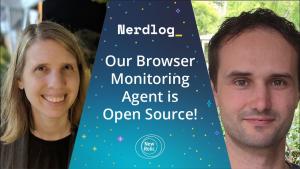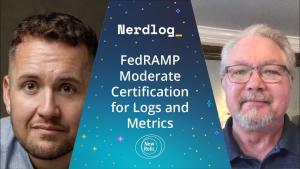No more code cruft. You need to decrease the human errors and engineering burden. Let’s try to make observability data more consistent. We hear some version of this all the time. At New Relic, we want to ensure you devote more time to quickly building, monitoring, maintaining, and measuring the performance of your apps with the New Relic One developer tools you know and love. That’s why we’ve updated the New Relic Ruby agent for auto-instrumentation. The Ruby agent will help you identify and solve performance issues, and collect and analyze business data to make more data-driven business decisions and create improved customer experiences.
Suppose you’re a beginner or even a New Relic power user. In that case, you’re probably wondering where even to get started—how you can begin to understand and leverage all of the amazing functionality to get the most out of New Relic One. That's why we’ve also designed a certification for you that allows you to skill up and get hands-on with the products and features necessary. Learn more about both below.
Use prepend auto-instrumentation with Ruby v7.0
For two years, we've been shipping the 6.x series of the Ruby agent. During this time, we’ve gathered a lot of deprecated changes to the API and implemented the open source W3C specs for Trace Context and Infinite Tracing for distributed tracing tail-based sampling. Now we are releasing the 7.x series of the Ruby agent. So what does this mean for you? The main changes include ending the support for Ruby 2.0 and 2.1, removing the SSL certificate bundle and several deprecated APIs from 6.x releases, making prepend the default for auto-instrumentation over method-chaining, and getting consistent configuration attributes for auto-instrumentation.
Are you still confused about all the changes and how this affects your instance? No worries! Software Engineering Manager Angela Tan and Software Engineer Tanna McClure break it down and speak in depth about each of the changes, how New Relic finds the gems that conflict with the new agent, and how you can take the steps necessary to ensure you’re ready for the Ruby agent v7.0.
Próximos pasos
To get started, read the Ruby agent v7.0 documentation, review our migration guide so that you can migrate successfully to Ruby v7.0, and join the conversation in the Explorer’s Hub. Then, configure the New Relic Ruby agent today!
Earn your New Relic Developer Certification
Programmability empowers you to build custom applications and extend the power and capabilities of New Relic One. As you may know, we also recently open sourced our docs, Pixie, and all of our integrations, SDKs, and instrumentation agents to demonstrate our commitment to open observability for all. Combined with our suite of out-of-the-box developer tools, you can better automate workflows, collaborate with your teams, and create custom visualizations that meet your business needs.
In our Nerdlog segment, Principal Product Manager Jemiah Sius explains the value of deep visualizations in New Relic One, how you can get hands-on and start learning, and how and why you can build on the platform to solve your unique problems.
Próximos pasos
If you’re ready to create and deploy a New Relic One application from scratch, create a new custom visualization and run it locally, add custom visualizations to dashboards, and much more, complete the programmability certification today! Read this blog if you need more information about the certification.
Subscribe to our Nerdlog emails to get weekly updates about the latest features and releases from the people who built them. Join the Nerdlog discussion live every Thursday at 12 p.m. PT (8 p.m. UTC) on Twitch or follow along in What’s New.
If you're not a New Relic customer, sign up for your free account today.
Las opiniones expresadas en este blog son las del autor y no reflejan necesariamente las opiniones de New Relic. Todas las soluciones ofrecidas por el autor son específicas del entorno y no forman parte de las soluciones comerciales o el soporte ofrecido por New Relic. Únase a nosotros exclusivamente en Explorers Hub ( discus.newrelic.com ) para preguntas y asistencia relacionada con esta publicación de blog. Este blog puede contener enlaces a contenido de sitios de terceros. Al proporcionar dichos enlaces, New Relic no adopta, garantiza, aprueba ni respalda la información, las vistas o los productos disponibles en dichos sitios.



